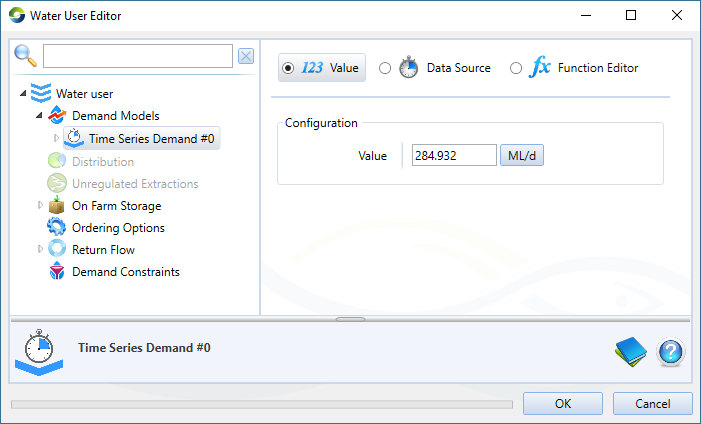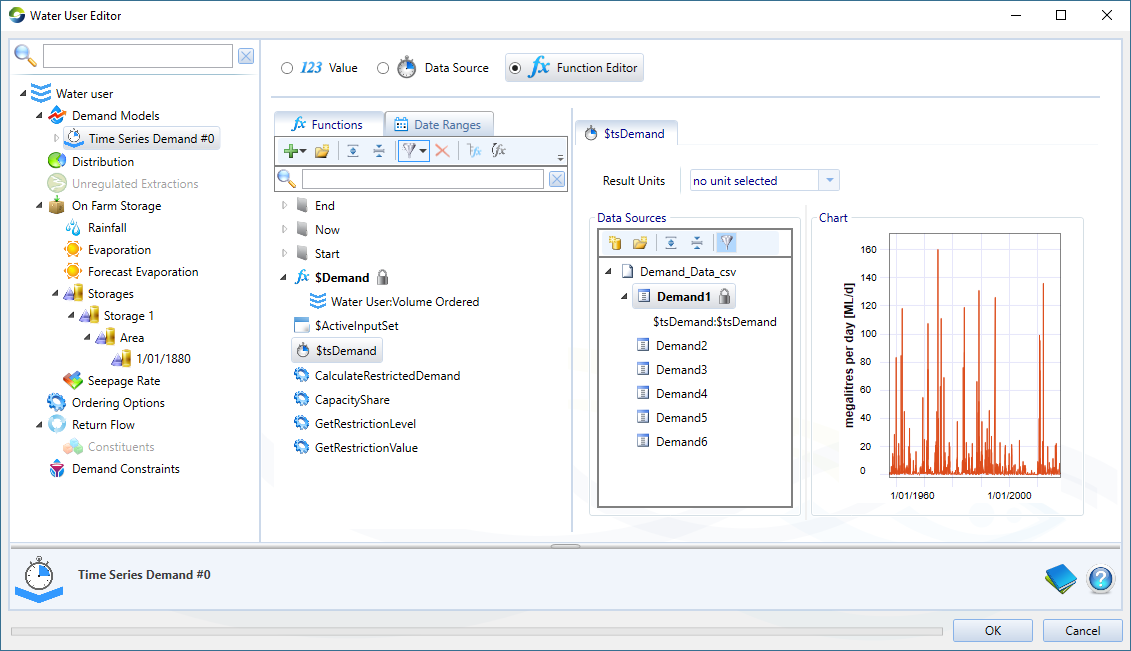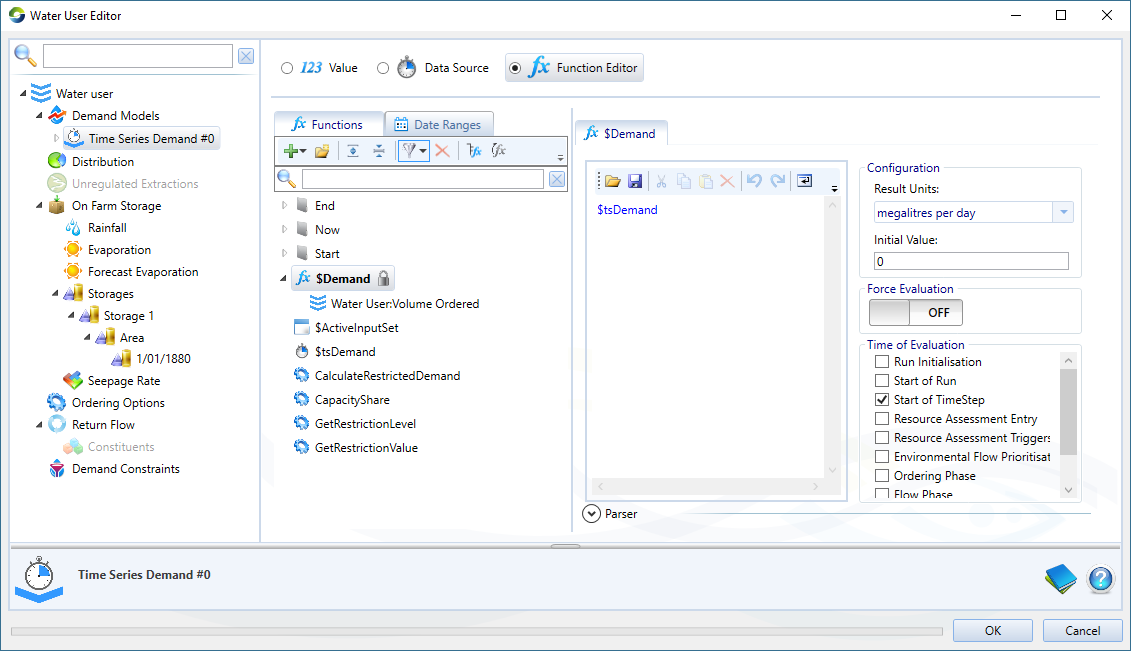A time-series demand model (shown in Figure 1) allows you to extract water directly from a storage and identify the amount of water required to satisfy a demand at each time-step. The model does not have to be directly downstream of the storage, the supply point will order water from the storage to meet demands.
If a confluence node is connected between a storage node and a water user demand node, the flow pathway link in the confluence must be set to Regulated for the storage to order water to satisfy the demand downstream. If it is left unregulated, water will not be ordered from the storage and the supply point will pull water from the river at the point in the network that it sits to meet the demand. if the demand is higher than the volume in the reach, then the supply point will extract everything.
If there is no storage in the network above the supply point and water user node, then the volume is extracted from the river at the point where the supply point sits in the network.

Time-series demands can be specified using either a single value, a time-series data file (Table 1 shows the format of a file) or a function using the Function Editor.


Refer to Return flows for details on configuring this parameter.
Row | Column (comma-separated) |
|---|
1 | 2 |
|
Where:
date is the date of observation in dd/mm/yyyy format (eg. 31-12-2000)
value is the observed value (eg. 2600).



